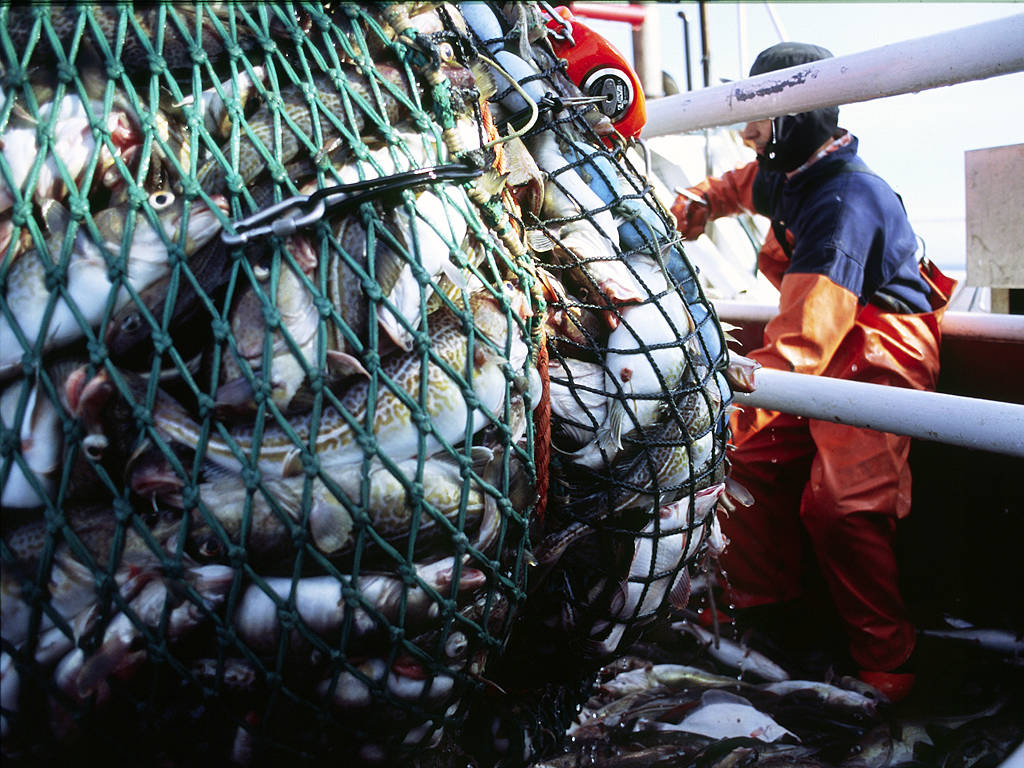The important role of the Baltic cod
The cod in the Baltic Sea is very different from the cod in the North Sea and the Atlantic. It has adapted both its body and its behavior to the low amount of salt in the brackish water. Cod is considered one of the most important fish for human consumption. But even more important than its status as a food fish, is the role of cod in the ecosystem.
When the amount of cod changes in the Baltic Sea, the amount of all the other species changes, right down to microscopic animals and algae. When the cod population falls and they are not eating as much of their food, such as sprats for example, the sprats grow in number. The sprats then eat more zooplankton (tiny animals). The zooplankton is then not eating as much phytoplankton (microscopic algae) as when the food chain is in balance. And very large amounts of phytoplankton mean more algal blooms – a major growth of planktonic algae. This, in turn, threatens all kinds of marine life, as it removes the oxygen in the bottom waters and risks poisoning several species. In addition, oxygen-free bottoms make it harder for cod eggs and fry to survive – worsening the effect.
When the cod decreases in number due to overfishing and environmental damage...
...the amount of sprat in the sea increases, as sprat is an important food for cod. Here, sprat are seen inside a cod belly.
Photo: Randel-Kreitsberg-CC-BY
Increased amount of sprat in turn leads to fewer zooplankton, such as copepods, because sprat eats zooplankton.
Photo: Frank-Fox-CC-BY-SA
Less zooplankton leads to more phytoplankton, because zooplankton eat phytoplankton.
Too much phytoplankton eventually leads to algal blooms - a major problem for the Baltic Sea. In the long run, the algal bloom leads to worse conditions for the cod's fry - and in this way the negative spiral strengthens itself.
Photo: Envisat-satellite-CC-BY-SA
Overfishing in the Baltic Sea, and the exception in Öresund
In the Baltic Sea, cod has been fished very hard. Cod reach sexual maturity at between 2 and 6 years of age and can live up to 25 years. When fishermen catch cod that are too young, the fish have not had time to reproduce – and the population declines. The high fishing pressure has put stress on Baltic cod to reach sexual maturity earlier than normal, and many young cod are undernourished, infested with parasites and in poor health.
A major threat to cod is bottom trawling, where a kind of net bag is pulled along the bottom of the sea. In addition to catching a lot of fish, the trawling also damages the seabed, churning up bottom-dwelling animals and plants. Trawling has been banned in the Öresund strait since the 1930s. As a result, cod are doing much better in Öresund than in the Baltic.
A cod can become sexually mature as late as 6 years of age, and can live up to 25 years.
Photo: Joachim-S.-Müller-CC-BY-NC-SA
When the cod is pressured due to overfishing, it never has time to grow into large individuals that can reproduce a lot.
Photo: Jonn-Leffmann-CC-BY
Bottom trawl fishing is a major threat to cod.
Fishing quotas and bans
Some cod stocks have been fished so heavily that they have declined to dangerously low levels. The species is now classified as vulnerable on the Red List. The International Council for the Exploration of the Sea advises on restricted fishing. The EU countries have agreed on quotas for how much cod each country can catch. It has also been decided that cod below a certain size must not be caught. This is because they want the cod to have time to reproduce before it is fished. The gear used in fishing is also restricted. But many say that is not enough. The World Wild Fund for Nature (WWF) and many scientists want to stop cod fishing in the Baltic Sea altogether.

The Canadian cod collapse
Along Canada’s Atlantic coast lies the Grand Banks area, where bottom trawling for cod began back in the early 1900s. Initially, catch sizes rocketed up, peaking in the 1960s. But in the late 1980s the cod stock collapsed completely, and in 1991 cod fishing was banned in the area. At that time, only about 1% of the cod population remained, compared to 1960.
The cause of the crash was overfishing combined with low growth. The collapse in the Canadian Grand Banks is similar to what is happening in the Baltic Sea in many ways, but as the Baltic is an inland sea with few other large predatory fish, the impact of overfishing is possibly even greater here.